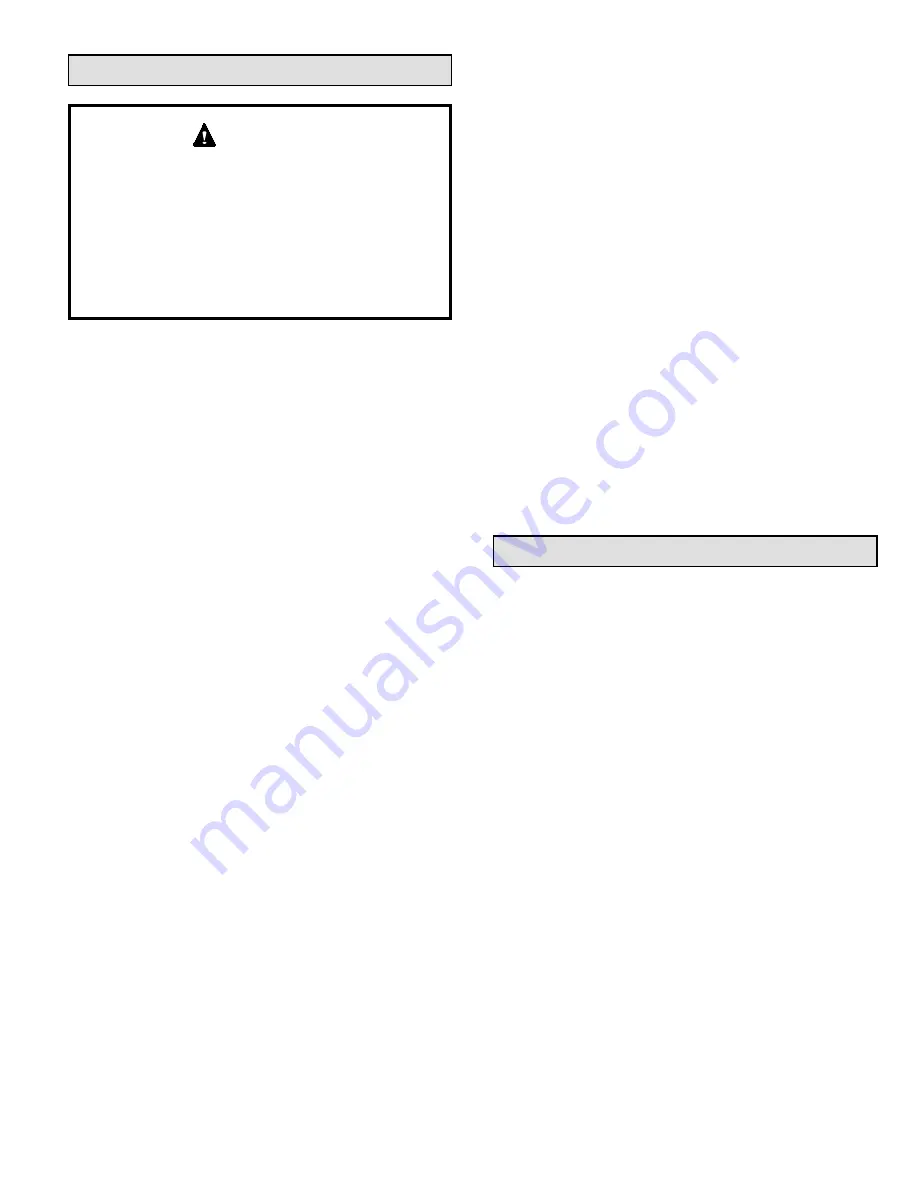
507838-01
Issue 1813
Page 17 of 19
Check-out Procedures
During installation, service or maintenance, make sure
that copper tubing does not rub against metal edges
or other copper tubing. Care should also be taken to
ensure that tubing does not become kinked. Use wire
ties to secure tubing to prevent movement.
Do not secure electrical wires to tubing that carries
hot refrigerant gas. Heat from the tubing may melt the
wiring insulation, causing a short circuit.
IMPORTANT
NOTE:
Refer to outdoor unit installation instructions for
system start-up instructions and refrigerant charging
instructions.
Pre-Start-Up Checks
• Is the air handler properly and securely installed?
•
If horizontally configured, is the unit sloped up to 1/4
inch toward drain lines?
• Will the unit be accessible for servicing?
• Has an auxiliary pan been provided under the unit
with separate drain for units installed above a finished
ceiling or in any installation where condensate
overflow could cause damage?
• Have ALL unused drain pan ports been properly
plugged?
• Has the condensate line been properly sized, run,
trapped, pitched, and tested?
• Is the duct system correctly sized, run, sealed, and
insulated?
• Have all cabinet openings and wiring been sealed?
• Is the indoor coil factory-installed TXV properly sized
for the outdoor unit being used?
• Have all unused parts and packaging been disposed
of?
•
Is the filter clean, in place, and of adequate size?
• Is the wiring neat, correct, and in accordance with the
wiring diagram?
• Is the unit properly grounded and protected (fused)?
• Is the thermostat correctly wired and in a good
location?
• Are all access panels in place and secure?
Check Blower Operation
• Set thermostat to FAN ON.
• The indoor blower should come on.
Check Cooling Operation
• Set thermostat to force a call for cooling (approximately
5ºF lower than the indoor ambient temperature).
• The outdoor unit should come on immediately and the
indoor blower should start between 30 - 60 seconds
later.
•
Check the air flow from a register to confirm that the
system is moving cooled air.
• Set the thermostat 5ºF higher than the indoor
temperature. The indoor blower and outdoor unit
should cycle off.
Check Electric Heat (If Used)
• Set thermostat to call for auxiliary heat (approximately
5°F above ambient temperature). The indoor blower
and auxiliary heat should come on together. Allow a
minimum of 3 minutes for all sequencers to cycle on.
• Set the thermostat so that it does not call for heat.
Allow up to 5 minutes for all sequencers to cycle off.
Use of Air Handler During Construction
It is not recommended to use this air handler unit during any
phase of construction. Very low return air temperatures,
harmful vapors and operation of the unit with clogged or
misplaced filters will damage the unit.
Air handler units may be used for heating (heat pumps)
or cooling of buildings under construction, if the following
conditions are met:
• A room thermostat must control the air handler. The
use of fixed jumpers is not allowed.
•
Air filter must be installed in the system and must be
maintained during construction.
•
Air filter must be replaced upon construction
completion.
• The air handler evaporator coil, supply fan assembly
and duct system must be thoroughly cleaned following
final construction clean-up.
•
All air handler operating conditions must be verified
according to these installation instructions.






















